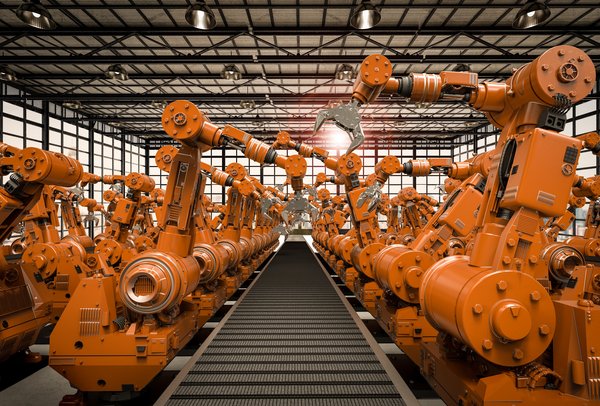Our researchers in robotics and intelligent environments are leveraging their creativity and ingenuity to push boundaries as they invent new and ever more agile and helpful robots and increasingly sophisticated smart 3D visual and tactile sensors to usher in a new era of human-machine collaboration. Others are using virtual models, including 3D simulation software, to test aeronautics structures and materials and improve on aircraft design.
Explore research on robotics and intelligent environments
The faces of robotics and intelligent environment research
Aerospace
3D design, analysis, simulation, and intelligence software is now used in aeronautics to improve parts production as well as testing accuracy. These technologies increase our ability to explore different parts manufacturing processes to meet aerospace engineering requirements. 3D printing makes it possible to reduce costs and green up production methods while simplifying the prototyping process to achieve high precision designs.
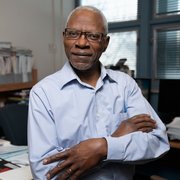
Augustin Gakwaya , full professor, Department of Mechanical and Industrial Engineering,
Member of Design en modélisation mécanique des matériaux (DO3M)
Augustin Gakwaya specializes in applying computational mechanics to aerospace engineering. His projects involve design, digital modelling, and system evaluation for testing purposes, including the strength and vulnerability of structures. He uses virtual models to test the strength of composite materials, which are lighter but less stable than traditional materials, in high-pressure and high-velocity conditions, hailstorms, and collisions with birds. The models he designs can also help improve aircraft design.
Machine perception
Artificial intelligence has paved the way for extraordinary advances in robotics. Robots are no longer used solely for repetitive tasks, but also to solve problems independently through deep learning that is made possible by the increased computational power of computers and the ever-growing amounts of data they parse. In order to interact with their environments, mobile robots and intelligent environments must perceive objects and people around them using visual, auditory, and tactile sensors that record large quantities of data, which then must be analyzed. REPARTI, a group made up in part by ULaval researchers, is working on creating these sensors.
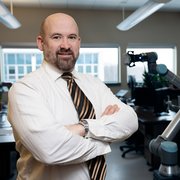
Philippe Giguère , full professor, Department of Computer Science and Software Engineering,
Codirector of the Northern Robotics Laboratory and member of the Centre for the Study of Distributed Intelligent Shared Environments (REPARTI)
Professor Giguère leads a research group on mobile robotics and machine perception. His work aims to increase the autonomy of intelligent robotic systems required to operate in harsh conditions, including Arctic and marine environments, using machine learning and data fusion. His projects address tactile and terrain perception. The tactile sensors he develops can recognize surfaces using concepts such as signal signatures specific to various physical textures.
Effectiveness and cohesion are key characteristics of Clément Gosselin’s lab research team. The relaxed atmosphere and the passion we share are conducive to cooperation and the sharing of ideas. I wanted to pursue graduate studies because I love research, and robotics in particular.
Pascal Labrecque, PhD graduate in mechanical engineering supervised by Professor Clément Gosselin
Graduate studies
Make the leap to graduate studies
Explore our programs of study based on your interests
Robotics and mechatronics
Robotics and Mechatronics combines mechanics, electronics, and real-time computing. now go hand in hand, making it possible to program robots using a tablet. Thanks to increasingly powerful processors and sensors and advances in artificial intelligence, traditional robots are now giving way to collaborative robots—or cobots—capable of working with humans. The main fields of application for service robotics are transportation and health, e.g., assisting individuals with visual or physical disabilities.
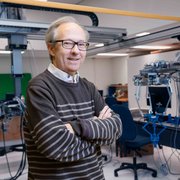
Clément Gosselin , full professor, Department of Mechanical and Industrial Engineering,
Canada Research Chair in Robotics and Mechatronics
Headed up by Clément Gosselin, the Robotics Laboratory is world renowned for its many landmark inventions, including the SARAH hand, an underactuated robotic hand for the Canadarm built in partnership with the Canadian Space Agency; Hexapode, an all-terrain walking robot with six feet that combines concepts from mechanics, electronics, and computer science; and HARRI, a smart robotic hand that allows two people to shake hands remotely. Professor Gosselin’s next challenge will be to design robotic systems capable of interacting intuitively and safely with humans in order to assist them with difficult tasks (service robots).
2D/3D computer vision and virtual reality
Recent advances in computer vision have led to the creation of extremely fast and accurate 3D sensors that are both ergonomic and versatile. The challenges that remain are to make sensors more intelligent and capable of combining information from multiple sources and to integrate simulation into the modelling process. Sensors will also have to be accessible to a wide range of users who do not have extensive technological knowledge.
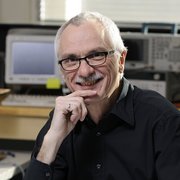
Denis Laurendeau
NSERC/Creaform Industrial Research Chair on 3-D scanning: 3-D Creation
Professor Laurendeau is the director of the Computer Vision and Systems Laboratory (CVSL) and a specialist in designing digital 3D sensors capable of capturing geometric and visual information. He works closely with Creaform, a machine vision company that marketed the 3D HandyScan scanner, a CVSL invention. His work on machine vision has led to a number of projects, including a 3D prostate model based on magnetic resonance images that helps doctors practise virtually before surgery, a 3D camera that records body measurements for prosthetics manufacturing, and the castelet, a mobile and reconfigurable electronic theatre stage.
We have a mechanical fabrication workshop onsite at the department that can produce almost any mechanical part. All the prototypes for our research projects are made here. My colleagues elsewhere in the world are really impressed when I tell them about it.
Clément Gosselin, professor, Department of Mechanical and Industrial Engineering
